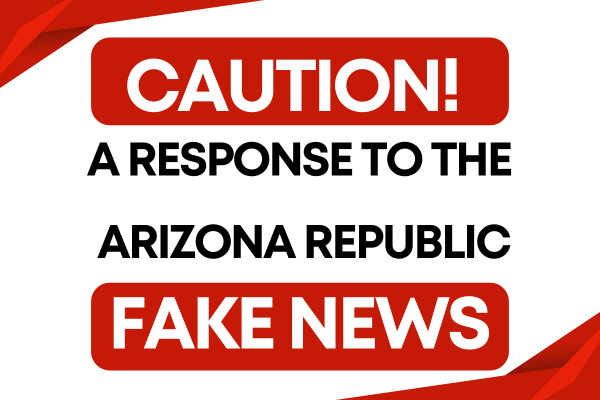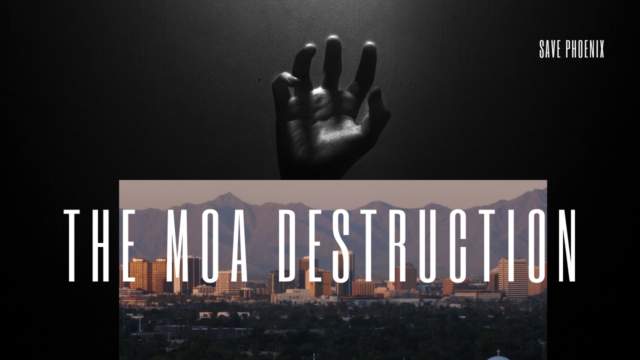I have discussed consent decrees and the damage they are doing to communities in detail here in recent months and while I need to move on, the danger they pose to communities cannot be overstated. With a 30 year track record of making cities more violent while destroying local police agencies, it is hard to understand why any city would even ponder permitting the DOJ to run their agency for decades to come, at an average cost of 10 million dollars a year.
The destruction in the aftermath of an imposed consent decree is not simply the opinion of those that will never vacation in Seattle, Chicago, Portland, or New Orleans but peer reviewed research reveals that consent decrees have caused “900 excess homicides and almost 34,000 excess felonies.”
The latest city to face this destruction is Phoenix. Without the typical high profile incident that has preceded other investigations, the DOJ began their investigation in August 2021 and in the coming months, this great city in the Valley of the Sun will have a choice to make.
The politicians can simply give their police department and ultimately the safety of their community over to lawyers, judges and monitors or they can stand with public safety and continue assisting the Phoenix Police Department with remaining a professional and progressive agency.
What Will Happen
It is no secret what the DOJ will do in Phoenix because they have used the same playbook in cities across America. After they make their decision to investigate and review years of police documents including video, they will come to their conclusion and meet with selective decision makers in Phoenix to announce their decision.
But that’s kind of not true.
The DOJ made their decision two years ago and they will not reveal their decision or the details of their investigation until they get the politicians to sign an “agreement in principle.” Once signed, they will reveal their investigative document that will be a virtual copy/paste from previous documents and then comes the press conference with the DOJ blasting the good men and women of the Phoenix Police Department.
If this sounds strange to you, it should.
First, who would sign anything before seeing the investigation? Commons sense says no one but that is exactly what has happened across the country and cities like Louisville have come to regret it. After the sensational press conference and published report listing a few examples of racist policing out of millions of contacts, the agency asked for the methodology used in their investigation.
The DOJ refused.
Citizen groups demanded to know specifics on the examples used including names of officers.
The DOJ refused.
A Secret Investigation
The secrecy is for a reason. Any detailed look at how the DOJ conducts their investigation reveals more holes than a Phoenix golf course.
Each of these so called reports hinge on this statement. This is in the Louisville report but it will be present in the Phoenix report as long as the “replace” command is used properly by the investigators.
“We have reasonable cause to believe that LMPD engages in racial discrimination in violation of Title VI of the Civil Rights Act of 1964 and the Safe Streets Act. Black people in Louisville disproportionately experience the conduct described in the previous sections of this report. Nearly half of LMPD’s reported uses of less-lethal force from 2016 to 2021 were against Black people—twice the overall percentage of Black residents in Louisville Metro.”
The DOJ will not discuss methodology because as Dr. Robin Engel has said, comparing police activity to the population is “junk science.”
Louisville consists of 23% black residents while they make up 73% of the homicide suspects and 73% of the homicide victims. In 2021, blacks were the suspects in 66% of the violent crimes while they were the victims of violent crime at a rate of 52%.
Considering that use of force is used against those arrested for crimes, the only way that will compare evenly to a population is if the population is committing crime evenly. Anyone with a few brain cells knows this so that is why the DOJ will not go into detail about their investigation and methodology used.
Phoenix Investigation
The Phoenix Police Department responds to over 2 million 911 calls a year. Annual contacts with citizens are dramatically higher than this so with the DOJ looking at multiple years of data and millions of citizen contacts, they will certainly find a few examples they will point at. But they will not tell you specifics or how the agency responded to the incidents. Prior examples used in reports included officers that were disciplined and fired by the agency but that will not make it in the report because that kind of context tends to lessen the outrage the DOJ is looking for.
The DOJ will also point out some policies, that in their opinion, are contributing to this “pattern and practice.” In Louisville, they cited the use of LVNR as “inherently dangerous” with the potential to cause “serious bodily injury or death.” That is an outright false statement to anyone that visits a jiu-jitsu gym or watches MMA and the National Law Enforcement Training Center has not had a documented death since it’s inception 40 years ago.
But I understand why the DOJ uses these examples. To the common citizen, this tactic “looks bad” so why not use it in a report to garner outrage from the community and subsequent compliance from the politicians.
But that reveals the ultimate problem with these investigations.
If an agency was truly bad enough to warrant federal oversight and control, then why is the evidence weak and distorted at best?
Phoenix Reaction
The politicians tasked with agreeing with the DOJ face immense pressure. Virtually every city before them has agreed while asking questions could evoke disdain from an entity that doesn’t exactly play nice when others want answers. The DOJ also ensures that they have willing players in place that will simply nod their head in agreement with whatever is said. This is typically a police chief with a history of working with the DOJ and a few scattered allies that have the ears of the politicians.
But the truth should matter and it will be much easier asking questions before spending millions of dollars on so called police reform than deal with what current consent decree cities are dealing with at this moment. New Orleans, Albuquerque and Seattle have had consent decrees for over a decade and despite meeting the benchmarks of the agreement set forth by the DOJ, they cannot get out of it. There is simply too much money going into the pockets of those involved to move out of a city once they are there.
Phoenix Decision
Make no mistake. If the politicians in Phoenix do not tread lightly and do their due diligence, they will send the city into absolute chaos. Before agreeing to anything, the politicians must review the investigation and determine if it was conducted appropriately without bias, opinion or conjecture. Unless the DOJ has changed course, that will be a threshold that should stop any further government involvement.
As the politicians weigh the benefit of the decree, they should decide whether they want their police chief (and them) running public safety or court appointed monitors.
To do the latter is an attack on their leadership capability.
The Phoenix Police Department is a professional and progressive agency that has evolved greatly in recent years while at the same time dealing with extremely high violence. Despite violent crime being at a two decade high in 2022, their efforts have that going in a downward trend. The agency is committed to transparency at level rarely seen from other major cities and they are making the right decisions at this time in policing history.
For more than a decade they have utilized a civilian review board, less lethal tools, full time community policing officers along with full time bias crime investigators. In recent years, Phoenix has embraced body cameras, developed early intervention programs, expanded training, developed an intelligence center, and participated in exhaustive reform recommendations in 2019 along with multiple other initiatives. These sound decisions are continuing with a crime reduction plan, RMS development, real time crime information program, and policy advancements that include duty to intervene and standards of public trust.
An Alternative Decision
I am not advocating completely ignoring the DOJ but there is not a coherent argument that their involvement helps any agency or community. The recent research by the Law Enforcement Legal Defense Fund should stop anyone that doubts this and there is another decision that the politicians could make.
Before signing off on an agreement without seeing the evidence, the DOJ could simply present their evidence in court and give the city and agency an opportunity to defend what has been said.
If the evidence is solid, the DOJ should welcome this as it would only bolster their need to intervene. The cost of a consent decree is high financially and even higher when it comes to crime and the future of the Phoenix Police Department so the evidence should and must be evaluated.
Just as Phoenix PD has established. Transparency “is not just a slogan or a buzz phrase for us. It’s a commitment.”
The DOJ should have that same commitment and the politicians within Phoenix can ensure that occurs.
This article originally appeared at Law Officer.





